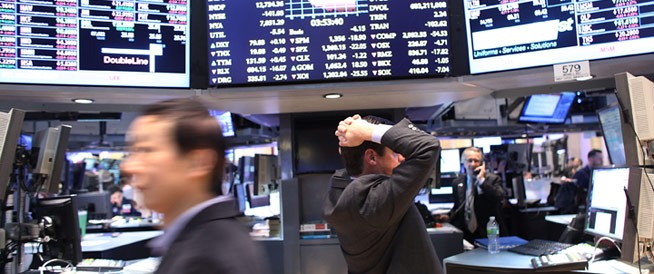Advisers turn to alternative mutual funds on rise fears
Post on: 10 Июль, 2015 No Comment

A television screen displays Federal Reserve Chair Janet Yellen’s news conference as specialist John Urbanowicz works on the floor of the New York Stock Exchange June 18, 2014.
NEW YORK (Reuters) — Investment advisers, bracing for the U.S. Federal Reserve to raise interest rates, are seeking alternatives to plain-vanilla bond funds, and some are turning to mutual funds that employ hedge-fund-like tactics, including the ability to bet against securities.
After record annual inflows exceeding $40 billion in 2013, the appetite for U.S. alternative mutual funds, also known as hedged mutual funds or liquid alternatives, has been insatiable. Demand has grown $13.5 billion this year through May, nearly 9 percent of their $154 billion in total net assets, according to Morningstar data.
Every hedge fund firm is working on a liquid alternative product, said Nadia Papagiannis, director of alternative investment strategy for global third-party distribution at Goldman Sachs Asset Management. I wouldn’t be surprised, if we had a shock to the system, that we would see unprecedented inflows into alternative mutual funds, she said.
Many investors are worried that bond yields will spike and prices will fall once the Federal Reserve ends its massive bond-buying program and raises interest rates. His concern has led many into alternative mutual funds, which can use hedge fund techniques to protect against market losses.
With the risk of bonds higher today than it has been in the past, fixed-income isn’t likely to play that same risk reduction role in a portfolio, said Ann Marie Etergino, an adviser at RBC Wealth Management. Alternative mutual funds help to fill that gap, she said.
Alternative mutual funds can mimic hedge funds through strategies such as shorting various assets but must comply with mutual fund regulations such as a roughly 33 percent limit on leverage, or borrowed cash, and a maximum 15 percent exposure to illiquid securities.
Examples include the AQR Long-Short Equity Fund ( QLEIX.O ), Blackstone Alternative Multi-Manager Fund ( BXMMX.O ), and the BlackRock Global Long/Short Credit Fund ( BGCAX.O ).
While the rush into the funds has continued this year through May, the $229 billion Pimco Total Return Fund and the $72 billion Templeton Global Bond Fund, the two largest actively-managed bond mutual funds, have posted outflows of nearly $16 billion and $745 million over the same period, respectively, according to Morningstar data.
Many advisers said they had boosted their stakes in alternative mutual funds to 5-10 percent of client portfolios in recent months.
We’re reviewing everything, said Joseph Matina, a private wealth adviser at UBS, on the various funds available.
NOT STRESS TESTED
Risks to alternative mutual funds include patchy performance across different fund types and short track records.
Long/short equity funds, which can bet both on and against stocks, have been the most popular alternative mutual funds this year with inflows of $8.5 billion through May. The funds gained nearly 15 percent last year and are up 1.7 percent this year through May, according to Morningstar.
Managed futures funds, which mainly invest in listed or privately traded derivatives such as swaps and futures, fell 0.9 percent last year and are down 1.5 percent this year through May.
Of the 474 alternative mutual funds, 233 have been launched in the past three years, according to Morningstar. Most launched after the 2008 financial crisis, which makes it hard to tell whether or not they will survive the next major crisis, said Michael Beriss, a private wealth adviser at Ameriprise Financial.
The U.S. Securities and Exchange Commission is examining about 25 investment firms to determine whether certain alternative mutual funds are complying with mutual fund rules on
liquidity, valuation and leverage.
The biggest risk is underperformance, said Josh Charney, alternative investments analyst at Morningstar.
(Reporting by Sam Forgione)














